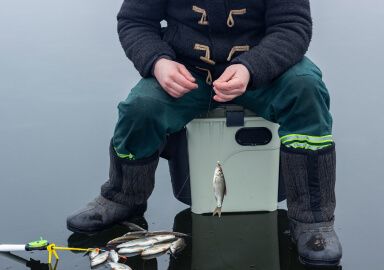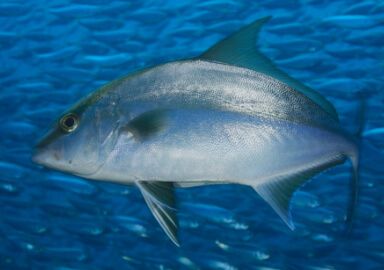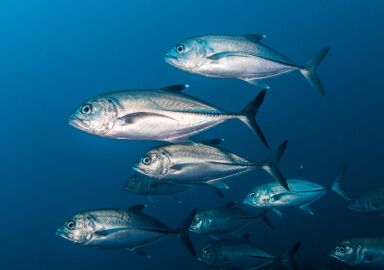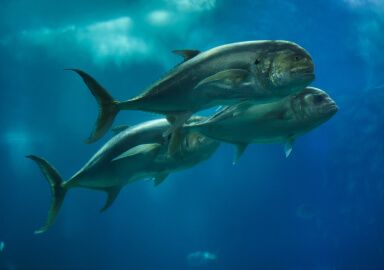Horse-eye Jack
Found in the warmer parts of the Atlantic Ocean, horse-eye jack is popular with light tackle spinning and fly fishing enthusiasts.
View 3 listings
3
listings
–
price starting from
3
countries
–
to the nearest trip
Where and When?
The horse or big-eyed jack is a resident of the middle, sub-tropical reaches of the Atlantic Ocean, where it is usually found in open water. This fish tends to structures such as reefs, floating buoys and oil platforms. In the west, it can regularly be caught from Florida and the Gulf of Mexico south to Beliz, with the distribution ending about Rio in Brazil. Along the eastern Atlantic ocean shore they are distributed from St. Paul’s Rocks south to Ascension Island.
While younger specimens may enter estuaries and freshwater, the preferred environment of mature horse-eyed jacks is ocean waters, usually within the continental shelf. The depth range is from almost zero to about 140m. (459 ft.). Its movements are typical of many predators in these areas and, while there are no mass migrations, there is an overall move to higher latitudes in summer months and the reverse in fall.
Near the equator the horse-eyed jack can be active, and thus caught, throughout the year, but absent or not feeding much in cooler areas in winter. Horse-eyed jack can feed at night, particularly during full moon due to their large eyes, but most fishing is carried on in daylight - mornings and evenings usually being best.
About Horse-eye Jack
The horse or big-eyed jack, Caranx latus, is an important sport and commercial fish species within its distribution. In shape, they are similar to other Carangids, being elongate, robust and with strong, but thin, caudal (tail) fins. This species has large eyes and is very similar to Caranx sexfasciatus, the “other” “big-eyed jack” found in the Indo-Pacific region.
Big-eyed jacks are dark or silvery blue in the upper parts, changing to being lighter and more silvery down the flanks. There is no dark spot behind the pectoral fin and the tail fin is often partly bright yellow. Juveniles have five dark vertical bars on the body that disappear with age. The species has two rows of strong, pointed teeth in the upper jaw and one in the lower.
Horse-eyed jack can attain 101 cm. (39,8 in.) with a maximum mass of 13.4 kg. (29,5 lbs.). The main food is small shoaling fish, but they also take invertebrates such as shrimps, squid or crustaceans. Smaller horse-eyed jack usually swim in shoals while adults are often in small groups and, occasionally, pair up with other fish species and “patrol” reefs and structure.
How to Catch?
The horse-eyed jack is a favourite sport fish in many areas and can be caught on light to medium spinning or fly tackle. Shore fishing around rocky promontories, from piers and platforms and in estuaries is often possible, but most horse-eyed jacks are caught from small, shore-based, boats.
Live bait can work, but spinning and fly fishing are generally more popular. A wide variety of artificial lures are used, but most anglers agree that a rapid, erratic retrieval is best. Plastics, jigs, spoons and plugs of various sizes are used effectively and, with fly fishing different patterns, colours and sizes of flies can be successful. Local anglers usually have their favourite lures and flies, and it is best to ask them to tell you what works best in a particular area.
Sometimes, in very clear water, horse-eyed jacks form an obvious black patch in the water. These fish “spook” easily but, if carefully approached and a suitable lure or fly is cast right beside the shoal and retrieved very rapidly, the dark mass breaks into individual fish that make a mad dash at what they believe is their prey. Often the largest fish succeeds, but a shoal will usually only respond once and then the chance is lost. Sight fishing for horse-eyed jack is an exciting and memorable experience.











